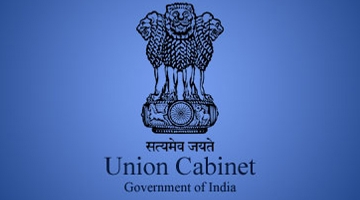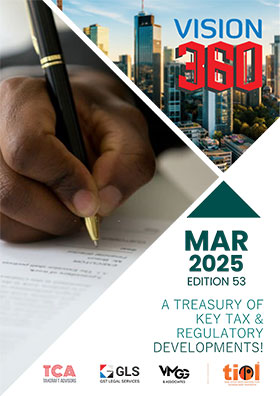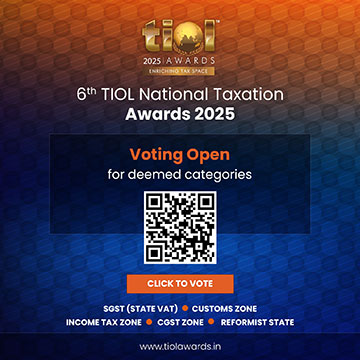Viksit Bharat castle cannot be built on a single pillar
APRIL 04, 2025
By Naresh Minocha, Consulting Editor
"DATA is the new oil...Data is the new gold," exuded Prime Minister Narendra Modi in Houston on 22nd September 2019. He was addressing an Indian community event dubed as #HowdyModi. Mr. Modi added: "Answer to Howdy Modi is ‘Everything is fine in India '."
Any accountability-seeker would disagree with his reply as many things are wrong in the country right from ground reality to the national dream named Viksit Bharat @ 2047.
Mr. Modi has been marketing his resolve of transforming India into a developed country by 2047 since 15th August 2022. He has, however, shied away from referring to NDA's earlier failure to realize this dream by 2020. (Don't let ‘Developed Nation' Vision Turn into Grand Illusion, Again and Tricolour & Parliament are Witness to Illusion named ‘Developed India' https://bit.ly/3AqEVpw).
This ostrich-like approach to bitter truth conflicts with BJP's 2004 Vision to connect past with the present and the future to attain present goals. The Vision document articulated this belief by quoting Swami Vivekananda as having said: ‘ It is out of the past that the future is moulded. It is the past that becomes the future '.
No nationalist would, however, like Viksit Bharat @ 2047 dream to go the "India, a Developed Nation by 2020" way. The latter slogan was trumpeted by Vajpayee Government. Hence this column's resolve to flag flaws in the Viksit Bharat (VB) model to pave the way for guaranteed success.
With no lessons learnt from previous regimes & its own previous terms, Modi Government is building VB dream house without three pillars. The structure is being constructed, currently only on one pillar and that too a weaker one.
The first missing pillar is invaluable economic data from the much-delayed report of 7th Economic Census (EC). This data would have served as the foundation for National, State & District Register of Businesses.
A mountain of gold (data) was to be emerge from 7th EC. The data collection period was notified as June-December 2019. The exercise, however, got stretched up to March 2021.
After spending about Rs 700 crore on 7th EC, the Government has quietly decided to not make public this report. Couple this shock with the delay in approving the expenditure for 8 th EC ostensibly due to fund shortage! The decision on funding is now expected sometime in 2026-27.
This delay becomes ridiculous if we factor in the recommendations of Task Force on Improving Employment Data in its report submitted in June 2017. It suggested: "For the Economic Census to be relevant, its frequency needs to be increased to once in every three years."
Consider now the excuses for the delays over last three years before the Government decided to keep under wraps the results of 7th EC.
Ministry of Statistics and Programme Implementation (MOSPI), in its annual report for 2020-21, first hinted at preparation of interim report of 7th EC.
It stated: "The Ministry held several rounds of discussions with State/ UT Governments provisional results and interim report based on the 7th EC data collected thus far. In addition to developing sampling frame for future surveys, directory of establishments, etc., 7th EC results are expected to benefit policy makers, researchers, businesses, etc. to device targeted interventions to deal with COVID-induced economic stress across the country."
Later, MOSPI blamed COVID virus for the delay in conducting the field work. Subsequently, it shifted the blame to those States that did not approve the provisional results of EC as they had reservations about the quality of data. Only 13 States and Union Territories approved the data collected under 7th EC. West Bengal didn't allow collection of field data.
As MOSPI didn't get clearance from other States for enterprises data pertaining to their respective jurisdiction, it took the issue to the Cabinet Secretary-chaired Committee of Secretaries (CoS). The Committee decided on 13 th July 2023 that the data collected "may not provide a true account of the entrepreneurial activity in the State/ country ."
CoS thus recommended that it may not be feasible to publish the results of 7th EC. MOSPI thus didn't publish 7th EC report. Surprisingly enough, this decision has not been formally announced. It got disclosed in reply to questions posed by Parliament Standing Committee (PSC) on MOSPI. PSC, in turn, incorporated this information in its report submitted to Parliament on 6 th December 2024.
MOSPI, however, avoided mentioning the decision to abort 7th EC results in its reply to Lok Sabha question dated 18th December 2024. MOSPI answered: "Since this period was hit by Covid-19 pandemic and most of the business establishments were closed, the data of 7th EC could not be finalized ."
MOSPI had assigned the job of conducting 7th EC to CSC E-governance Services India Limited (CSC SPV), a company under the administrative control of Ministry of Electronics and Information Technology (MEITY).
According CSC SPV' s annual report for 2020-21, the company attained a new milestone in the field of survey under 7th EC. "It was for the first time in Indian history, field survey was conducted through mobile App and through the CSC (Common Services Centre) Network. A total of 40.19 crore EC Houses were surveyed by your Company at the end of March, 2021 as against the estimated target of 31.52 crore EC houses ."
In its latest report released on 19th March 2025, PSC noted that the total outlay of the 7th EC was Rs. 913 crores. Of this, Rs.691.04 crores have been utilized. It felt that "even after spending such a huge sum the purpose of the whole exercise was defeated. This is a sad state of affairs ."
PSC stated that MOSPI had not obtained Government approval to conduct 8 th EC. The Department of Expenditure (DoE), Finance Ministry, returned MOSPI's proposal submitted for obtaining clearance from Inter-Ministerial Expenditure Finance Committee (EFC).
DoE told MOSPI that "considering the fiscal constraints as well as the fact that FY 2025 -26 is the last year of the present Finance Commission Cycle and the fiscal resources available to the Government over the next Finance Commission Cycle would be known in February 2026, MoSPI may present the proposal for consideration of EFC after that date ."
PSC observed: "the last Economic Census i.e the 6th, was conducted in the year 2013, now with the non-finalization of the 7th Economic Census and push back of the date of 8th Economic Census, the gap between two consecutive Economic Census will grow to more than twelve years. This is a large void of data."
It thus recommended : "The Committee, therefore, urge the Ministry to salvage some useful data collected during the fieldwork done for the 7th Economic Census and to at least come out with some interim data for this period to partly justify the expenditure incurred on the survey ."
The second missing pillar is the inordinate delay in start of the 8th decennial population census in Independent India and the 16th one since 1872. It was to be conducted during 2020 and 2021 in two phases: 1) House-listing and house census with data collection on 33 questions posed to each household during April-September 2020. 2) Population enumeration, including counting of teeming millions of homeless households, was to be done during February 2021. The ambitious goal was to complete the census data collation and categorization in three years, i.e. by 2024. Even its first phase of house-listing was not done ostensibly due to Covid and there is a deafening silence on when it will be conducted. Would the Government have a census holiday? Would it start the 8 th or 9th census in 2031?
PSC on Ministry of Home Affairs (MHA), in its latest report dated 10 th March 2025, has failed to get any hint on the auspicious year in which the field work for census would start.
PSC only managed to get an assurance from MHA that, if required, additional funds would be allocated for census-related activities during 2025-26.
MHA whittled down the allocation for census and updating of National Population Register (NPR) to revised estimate of Rs 572 crore from budget estimate of Rs 1309.46 crore for 2024-25.
This chopping was done as the new declaration for census was not issued. The budget estimate for 2025-26 is Rs 574.80. This implies the Centre is as yet not in a mood to announce the date for field work for two phases of census.
Assuming Modiji's mantra for the Government to work three times faster during the third term is applied to kickstart the population census, its results are unlikely to be available before the 2028 Lok Sabha elections.
This is thus the first time that India's record of holding regularly organised census without break since 1872 has been shattered! The consequent impact of this unprecedented delay on welfare schemes, economic planning and growth would be shocking to say the least. As it is, several welfare schemes are based on 2011 census data and thus excludes crores of potential beneficiaries. Similarly, certain welfare-cum-developmental activities are limited to ‘statutory towns' as identified in 2011 census. (Build Amrit Kaal Bharat With Latest Quality Data)
Can the foundation for VB dream castle be laid with data bricks drawn from 2011 population census data and 2013 EC? Why has the Opposition not flagged such concerns in the Parliament?
The third missing pillar is the 360-degree strategy for VB Mission. The strategy has been mentioned haphazardly and inadequately in two previous budget speeches. The Government is now taking steps to formulate a 25-year Vision for making India a developed nation by the year 2047.
A key step in this direction is setting up of ten Sectoral Group of Secretaries in 2023 for preparing the Vision. According to a reply given to recent question in parliament, "The objective of the Vision is to enable the Ministries/Departments to plan their schemes/policies towards achieving Viksit Bharat by 2047 ."
When would the Vision be made public? No Indication as yet. The reports of 10 groups might be kept under the wraps like the reports of several committees/commissions set up since 2014. Obsession with the secrecy and aversion to criticism has obviously led the Government to deprive researchers and analysts access to data buried in unpublished committee reports.
It is high time government makes public all reports submitted by panels that were constituted by Modi Government. These include reports of the Expenditure Management Commission, which was constituted in September 2014. Three studies on black money that were commissioned by UPA and submitted to Modi Government.
Special Investigation Team on Black Money, which submitted several reports to Modi Government in its 1 st term. The list of undisclosed reports of panels, formed in public interest and for national development, is long. The data buried in such reports and their unimplemented recommendations constitute the gold with which the road-map for VB can be laid.
The least the Government can do is to specify the key indicators that characterise a developed nation, say, in terms of per capita availability of water, food, hospital beds and average size of a house. What about average time to get justice as an indicator? Why not factor in the crime rate, instances of mob lynching, number of rapes, murders & riots in a year as indicators? Let the Government identify 50 indicators that make a nation holistically developed and benchmark Bharat's current status against them.
In the meanwhile, the World Bank has unveiled comprehensive strategy for attaining VB goal in a report captioned ‘ India Country Economic Memorandum- Becoming a High-Income Economy in a Generation '. Released on 27th February 2025, the report has mooted certain initiatives that have already been reported in the Press and thus can be skipped here. The Government ought to reckon this valuable report in its delayed Vision document.
The fourth and shaky pillar of VB dreamhouse is outdated methodologies for computing gross domestic product (GDP), inflation and other macroeconomic indicators. This issue has been dealt aptly in International Monetary Fund's (IMF's) annual country report on India released on 27th February 2025.
The report has given C rating to national accounts under IMF's "Data Adequacy Assessment Rating"! As put by IMF, "Data weaknesses have remained broadly unchanged since the last Article IV consultation ."
One can, however, find a ray of hope in IMF's disclosure: "India is undertaking a comprehensive overhaul of its real sector statistics to address existing methodological shortcomings and improve the accuracy of economic data for monitoring and policy design. The main issues in the compilation of national accounts are related to an outdated base year (this applies also to the CPI), methods used for the compilation of volume estimates, and discrepancies between production- and expenditure-side GDP. These issues are slated to be addressed through various work streams by early 2026 ."
It has identified four "main methodological issues" in computation of macro-economic indicators. These are: (1) an outdated base year (2011/12), (2) use of wholesale price indices as data sources for deflators due to the lack of producer prices indices, and excessive use of single deflation, which may introduce cyclical biases, (3) at times sizable discrepancies between production and expenditure approaches, that may indicate the need to enhance the coverage of the expenditure approach data and informal sector, and (4) lack of seasonally adjusted data and room for improvement of other statistical techniques used in the quarterly national accounts compilation.
The Report explains: "The current base year of the national accounts is 2011/12, while international best practices point to a recommended update every five years, or not more than ten, to ensure that the current structure of the economy is appropriately represented. As an economy changes and more recent data become available, revisions are made to realign the national accounts with the current structure of the economy ."
It continues: "The pattern of relative prices of the base year becomes less representative of economic conditions for periods further away from that year. Regular updates of the base year ensure that the weights used to measure volume GDP better reflect current conditions (for example, production technology and user preferences) and contribute to a more accurate measurement of GDP by avoiding over- or underestimating economic activity due to the use of an outdated structure of relative prices ."
The report has noted that the discrepancies between the production and expenditure approaches may indicate the need to further assess the data sources available for GDP compilation, especially for the expenditure side estimates. This assessment should ensure, for example, an adequate coverage of the informal sector, related to household final consumption expenditure, as well as an accurate coverage of the government final consumption expenditure data, mainly at the state level.
Data gaps, delayed availability of data, long interval between any two surveys is another element of the fourth pillar. Yet another element is the vacuum left by scrapping of Planning Commission (PC) in 2015. PC excelled in constituting many expert groups that prepared not only five-year plans, but also perspective plans for various sectors with 10-15 years' time frame. The resulting diverse volume of data is now simply not available.
PC's successor, NITI Aayog, has not generated such reports for each and every sector. NITI, on the other hand, didn't produce 15-years vision document and a seven-year strategy document for 2017-18 to 2023-24 as desired by a directive from Prime Minister's Office in May 2016.
The directive also provided for three-year action document for 2017-18 to 2019-20. These studies/reports were planned to fill the planning void created by end of 12th and last five-year plan in 2016-17.
NITI released three-years action agenda in April 2017. It later issued a five-year ‘Strategy for New India @75' during November 2018 in lieu of seven-year strategy and 15-years vision documents.
Before preparing 25-years Vision for VB, NITI should have explained to the Nation why the Government failed to achieve or implement many of targets and proposals contained in ‘ Strategy for New India '.
After all, failures and mistakes are stepping stones to the success. Repeated overlooking of failures is a sure-fire guarantee to reap failure in future. We should never overlook Swami Vivekananda's quote mentioned at the beginning of this column while toiling for VB dream.














